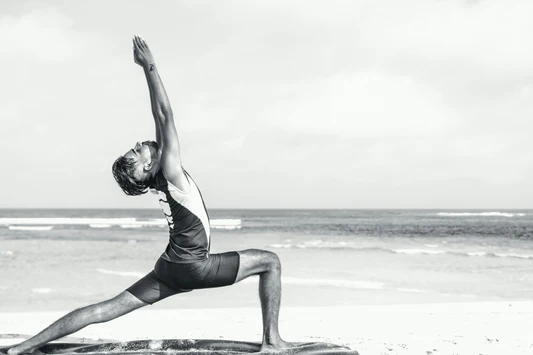EndurElite Chief Endurance Officer Matt Mosman discusses how to calculate your sweat rate in order to determine how much fluid you should consume during endurance exercise to avoid dehydration.
Also discussed are alternative methods to stay hydrated and supplements that may help "hyper-hydrate" athletes.
Simple Sweat Rate Calculator/Calculation
Calculate your hourly sweat rate with this formula: 16 x [(Starting Weight lbs) – (Weight lbs after 1-hour exercise)] + [fluids consumed during oz] = sweat loss in ounces per hour.
As an example, say my pre-exercise weight is 161 pounds and my post-exercise weight is 160 pounds. I also consumed 8 ounces of fluid during my hour of exercise. The calculation and results would look like this:
16 x [(161 lbs) – (160)] + [8] = sweat loss in ounces per hour.
16 x 1 = 16
16 + 8 = sweat loss of 24 ounces per hour
Full Video Transcript:
Good morning, family of fast. Matt Mossman, the Chief Endurance Officer over EndurElite.
Have you ever wondered how to calculate your sweat rate in order to determine how much fluid you should be consuming during endurance exercise to avoid dehydration?
That is what we are gonna discuss today.
Now the research has demonstrated that the sweat rates of well-trained athletes can be anywhere from 50 to 100 ounces per hour.
Now, failure to replace some of that fluid loss through sweat can lead to dehydration, which can have a negative impact on performance.
How To Calculate Sweat Rate Per Hour
So here's how to calculate sweat rate again, to help you determine how much fluid you should be consuming during endurance exercise to avoid dehydration.
- About two hours before endurance exercise, you're gonna drink about 16 ounces of fluid, so you go into exercise in a hydrated state.
- Now, right before exercise, you're gonna empty your bowels, you're gonna get naked, and you're gonna weigh yourself and you're gonna record that number.
- From there, you're gonna go exercise for one hour.
- Afterward, you're gonna get naked again, you're gonna wipe off any excess sweat, and you're gonna weigh yourself again, and you're gonna record that number.
- Also, during this hour, you're gonna record how much fluid you consumed. And you bring it all together and get your sweat rate loss by doing the following.
- You're gonna take your pre-exercise weight minus your post-exercise weight, you're gonna multiply that by 16 and to that you're gonna add how many ounces of fluid you consumed during endurance exercise, and that will give you your rate of sweat loss and how much fluid you should be consuming during endurance exercise to avoid dehydration.
Now, I say how much you should be because in some instances and depending on variables like weather, heat, humidity, your sweat rate might be a lot higher than that number that the sweat rate calculation spits out.
What Is A High Sweat Rate?
For example, I know some elite athletes that have a sweat rate loss of about 60 ounces per hour.
And honestly, it's not really too feasible to be able to consume that much fluid to be able to replace all the fluid lost from sweat. So what are you gonna do in these circumstances?
Before I get to that, I'm just gonna say that you don't need to replace all the fluids you lose through sweat during exercise.
I mean, a lot of what's been told about the decreases in performance has been over-exaggerated.
So again, take-home point here is you don't need to replace all the fluids during endurance exercise. Basically, you can still perform well without doing so.
Alternative Hydration Methods To Prevent Dehydration
So if you don't use your sweat rate calculation to determine fluid consumption, what can you do? Well, there are a couple of easy methods that are a little bit simpler to follow, and it seems to be just as effective demonstrated by the research.
Start exercise in a hydrated state
- One is first to come into an exercise in a hydrated state, and usually, this will involve drinking the carbohydrate-based sports drink with electrolytes. So you want to drink about 16 ounces of fluid about two hours before endurance exercise, so you come into it in a hydrated state.
Then for every hour of exercise that you're gonna do, you're gonna wanna shoot for anywhere for 16 to 32 ounces of fluid an hour.
Again, this will depend on things like heat, humidity, and generally just the weather. And this range of the 16 to 32 ounces will have you pretty covered to prevent, you know, really, really major dehydration and help you keep performing strong.
Drink to thirst
- Now, the second method you can resort to is something called drinking to thirst and it's exactly what it sounds like is you just drink when you're thirsty. Now a lot of people say, "That's a big problem. I need to be on a regimented drinking schedule to stay hydrated." But the research would actually disagree with you. There was a research study that came out that compared drinking to thirst to drinking on a regimen schedule.
And what they found is there are no significant differences in performance. So drink to thirst, just drink when you're thirsty, don't drink when you're not. So those two methods may be just as effective compared to calculating sweat rate loss and drinking the amount of fluid suggested by that.
Supplements That May Help Athletes Hyper-Hydrate
There's also a couple of different supplements that may help you to stay hyper hydrated. One being electrolytes.
You know, electrolytes don't have anything to do with cramping, they basically help maintain body fluid balance, and more specifically, they help your body hold on to more water so you're not losing as much through sweat.
Now the second one is glycerol, and I'm gonna reference something here in terms of how much you should be doing.
So with glycerol, you should ingest 1.2 grams per kilogram body weight and 26 milliliters per kilogram bodyweight of fluid 60 minutes prior to exercise.
So that's one supplement that has a decent amount of research behind it showing it can kind of hyper hydrate you, especially if you're a heavy sweater and you use a lot...lose, excuse me, a lot of fluid through sweat.
The other supplement you could look at is something called betaine and if you want to try this you want to take about 2.5 grams daily.
Timing doesn't matter. Research also suggests that taking creatine monohydrate might also act as a hyperhydrater.
When Are Sports Drinks Appropriate For Hydration?
Sports drinks should only be consumed when exercise goes over an hour in order to provide your body with fluid, carbs, and electrolytes.
Any exercise under an hour won't be affected by a lack of carb intake since the body has enough glycogen stored to fuel working muscles.
For exercise lasting under 60 minutes, stick with water or electrolyte supplements if you want flavor.
The Best Sweat Rate Calculators
We scoured the internet for the best sweat rate calculators and these three are the best:
- http://www.triharder.com/thm_swrate.aspx
- https://www.bergfreunde.eu/sweat-rate-calculator/
- https://ksi.uconn.edu/wp-content/uploads/sites/1222/2015/04/Sweat-Rate-Calculator.pdf
The Bottom Line On Sweat Rate Calculations And Avoiding Dehydration During Exercise
So those are some strategies basically to help you stay hydrated during endurance exercise outside of using the numbers you get from a sweat rate calculation.
So that is all I have for today, my endurance friends. If you want other videos like this on endurance training, nutrition, and supplementation, subscribe to our EndurElite YouTube channel or head on over to the EndurElite blog at www.endurelite.com.
Get social with us on Instagram and Facebook where you'll find 60-second brain bombs of these type of topics. And until next time, my endurance friends, stay fueled, stay focused, and stay fast.


